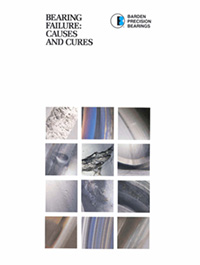A design engineer often has to be a jack-of-all-trades, with good working knowledge of statics, dynamics, materials, and manufacturing, in addition to their “real” area of expertise (packaging, dispensing, etc.). And while most of us long ago forgot the bulk of what we learned in engineering or technical school, design engineers use those concepts and formulas every day.
So, for those of you who do any type of mechanical design and sizing, and especially for you design engineers, here are 7.5 engineering resources that will help make your job a little bit easier.
Pu blished by Industrial Press, the Machinery’s Handbook has been a staple of engineering libraries for 100 years. This book contains pretty much everything a design engineer could need to know, from inertia calculations for non-uniform objects to the material properties for dozens of types of steel. If you only have one resource for engineering information, it should be this book.
blished by Industrial Press, the Machinery’s Handbook has been a staple of engineering libraries for 100 years. This book contains pretty much everything a design engineer could need to know, from inertia calculations for non-uniform objects to the material properties for dozens of types of steel. If you only have one resource for engineering information, it should be this book.
Most designs require multiple shaft-and-hole components, and the importance of getting the right amount of clearance (slip fit) or engagement (interference fit) is important. That’s where the ISO system of limits and fits comes in. A good online resource is available from Maryland Metrics, and a booklet of tables also exists. (I wasn’t able to find the booklet online, so if anyone knows who publishes it, feel free to leave a note in the comments, and I’ll share it in an update.)
Mechanical designs necessarily require a good knowledge of statics and dynamics, so if you sold your college Statics and Dynamics textbook for beer money (hey, it happens to the best of us) or wore it out from over-use, there are plenty of new and used options on Amazon and eBay.
 Sometimes, design engineers have to get involved after the machine has been sold and put into service, especially when there’s a failure or a problem. For bearing-related issues, the authoritative guide to failure modes comes from Barden Precision Bearings. Their brochure, Bearing Failure: Causes and Cures, has been helping engineers and technicians identify and prevent bearing failures for at least 20 years, and probably longer.
Sometimes, design engineers have to get involved after the machine has been sold and put into service, especially when there’s a failure or a problem. For bearing-related issues, the authoritative guide to failure modes comes from Barden Precision Bearings. Their brochure, Bearing Failure: Causes and Cures, has been helping engineers and technicians identify and prevent bearing failures for at least 20 years, and probably longer.
Since the global community has still not settled on one system of units, a unit conversion app is a must. Most engineers have memorized dozens of the most common conversions, lb to kg and inch to mm, for example, but how many of us have memorized the conversion from psi to pascal? There are dozens of online conversion tools available, but one of my favorites is unitconversion.org because it’s comprehensive but simple to use.

For linear motion systems, Bosch Rexroth’s Linear Motion Technology Handbook is one of the most complete resources available. It covers everything from explanations of the various linear motion technologies (linear guides, linear drives, and linear motion systems) to in-depth sizing calculations and technical considerations for each.
Another excellent linear motion resource comes from NSK. Their Precision Machine Components handbook not only provides technical descriptions and sizing calculations for linear motion components, it also serves as a product catalog and includes conversion charts and a condensed table of fits and tolerances.
Bonus item (#7.5)! Haydon Kerk recently published their 2016 Linear Motion Catalog and Design Guide. It can be requested on their “Ask the Experts” page, by checking the “new Haydon Kerk catalog” box. While I haven’t gotten to review this one myself, it looks to be more than worthy of a place on design engineers’ shelves.


Leave a Reply
You must be logged in to post a comment.